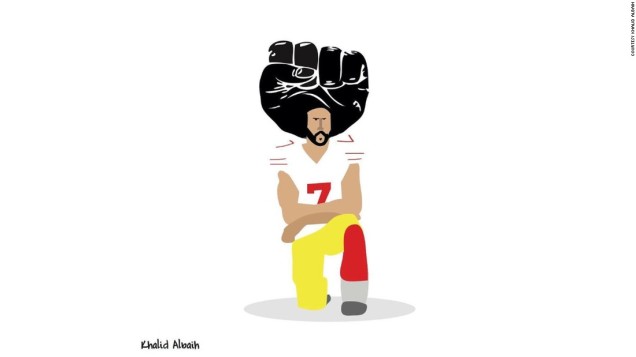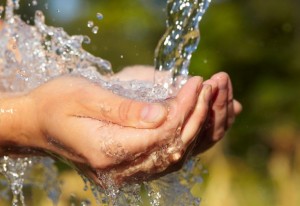
This panel event will explore questions in four main areas: (1) How have athletes historically participated in activism and resistance movements? (2) What are the implications of both participation and non-participation? (3) Where are the athlete activists in Canada? (4) How can coaches, parents, and athletes become more politically engaged if they choose to do so?
This is a FREE PUBLIC event; however, seating is limited so please RSVP via our Eventbrite page.
Wednesday, November 29th, 2017
5:30-7:00 pm – Panel event
7:00-8:00 pm – Reception
Liu Institute for Global Issues, UBC Point Grey Campus
Unceded and traditional Coast Salish territory of the Musqueam Peoples
Email questions to liv.yoon@ubc.ca
Watch the LIVESTREAM Re-cap [HERE]
Panelists

Shireen Ahmed (@_shireenahmed_) is a writer, public speaker and sports activist who focuses on Muslim women, and the intersections of racism and misogyny in sports. Her work has been featured and discussed in various media outlets. She is part of the “Burn It All Down” feminist sports podcast team. When she isn’t watching soccer, she drinks coffee as tool of resistance. Shireen is currently working on her first book. She lives in Mississauga with her family and her cat.
Read Shireen’s Vice Sports critique about the Pittsburgh Penguin’s accepting the White House invitation [HERE].

Tracie Léost (@tracieleost) is a young Metis athlete and Indigenous activist. Now a scholarship student at the University of Regina, Tracie’s journey started when she took a stand and used her running shoes to give silence a voice. In August of 2015, Tracie ran 115 kilometres in just 4 days to raise money and awareness for Missing and Murdered Indigenous Women and Girls in Canada (MMIW). In 4 days, the MMIW Journey of Hope raised $6,101.00 for a local organization that helps the affected families and victims. Two years later, the MMIW Journey of Hope is a global conversation. Tracie is a role model to others as she travels the country sharing her story to end violence against women. Tracie is a We Day youth speaker and takes pride in her community. She is a coach and mentor for four hockey teams at Ehrlo Sport Venture. This program gives inner city and underprivileged youth with the opportunity to participate in sport at no cost. She spends her evenings at the outdoor hockey rink regardless of if it’s -40 or the middle of a blizzard. Tracie believes in the importance of providing youth with a safe place, and loves being a positive influence to those involved.
Tracie has been doubted most of her life enduring stereotypes as both Indigenous and female. Although she has been breaking barriers in her everyday life through sport and activism, Tracie wants to set an example for others. She wants to share her message with others so they know they are capable of anything and everything. As Tracie always says, “I’m just an ordinary kid who went out and chased my dreams regardless of what people said and believed I was capable of”.
Read more about Tracie’s activism [HERE].
 Dr. Patricia Vertinsky is a Distinguished University Scholar and Professor of Kinesiology at the University of British Columbia. She is a social and cultural historian working across the fields of women’s and gender history with a special interest in physical culture, physical education and modern dance. Her work focuses on the study of normalizing disciplinary regimes in kinesiology, sport science and physical culture and the social, political, and scientific context in which they have been conceived and promoted. She is particularly interested in regimes of risk and the gendered body in relation to patterns of physical culture and globalization in the late 19th and 20th centuries. Dr. Vertinsky is an International Fellow of the American Academy of Kinesiology, Past-President of the North American Society of Sport History, and past Vice-President of the International Society for Physical Education and Sport History.
Dr. Patricia Vertinsky is a Distinguished University Scholar and Professor of Kinesiology at the University of British Columbia. She is a social and cultural historian working across the fields of women’s and gender history with a special interest in physical culture, physical education and modern dance. Her work focuses on the study of normalizing disciplinary regimes in kinesiology, sport science and physical culture and the social, political, and scientific context in which they have been conceived and promoted. She is particularly interested in regimes of risk and the gendered body in relation to patterns of physical culture and globalization in the late 19th and 20th centuries. Dr. Vertinsky is an International Fellow of the American Academy of Kinesiology, Past-President of the North American Society of Sport History, and past Vice-President of the International Society for Physical Education and Sport History.

Elisabeth Walker-Young (@elisabethwy) is currently Manager of Programs at Canucks Autism Network. Her philosophy is to demystify the barriers, and lived experiences of those marginalized in society and therefore in sport to educate and equip sport leaders with tools, desire and awareness to address issues and affect change.
A Paralympian with 13 years on the Canadian Paralympic Swim Team, Elisabeth retired in 2005 having represented Canada at 4 Summer Paralympic Games from Barcelona 1992 through to Athens 2004. Throughout her swimming career, she broke numerous Canadian and World records, bringing home 6 Paralympic medals (3 gold, 1 silver and 2 bronze) and was team captain for more than half of her career.
Elisabeth Walker-Young was Canada’s Assistant Chef de Mission for the London 2012 Paralympic Games and is Chef de Mission for the Canadian Team for the Toronto 2015 ParaPanAm Games. Bringing an athlete-centred perspective to this core leadership role, contributing to the planning and delivery of operations in Toronto, proudly supporting all members of Team Canada both on and off the field of play.
Her contribution to promoting the Paralympic Movement was enormous. In London, Walker-Young did hundreds of media interviews and also served as CTV’s English language commentator for the broadcasts of the Opening and Closing Ceremonies, and acted as a liaison with the Canadian Paralympic Committee’s (CPC) corporate and government partners during the Games. As a result of her role for the London 2012 Paralympic Games, Elisabeth Walker-Young’s was named to the
Canadian Association for the Advancement of Women and Sport (CAAWS) Most Influential Women List and was also a recipient of the Queen’s Diamond Jubilee medal, recognized as an athlete and builder.
Personally, Elisabeth, a newish mom, enjoys teaching spin classes and sharing her love and knowledge of an active healthy lifestyle with her class participants. Elisabeth loves to cook, read and be creative. A resident of North Vancouver, Elisabeth loves hiking, walking, running and snowshoeing in the trails with her husband Ian, her daughter and dog.
Moderator
Courtney Szto (@courtneyszto) is a PhD candidate at SFU in the School of Communication and the Past-President of UNA-Vancouver. Her doctoral research explores the intersections of “race”, citizenship, and sport in Canada.
In partnership with





 The following post was written by Hala Aurangzeb, one of our new UNAC-Vancouver board members. This contribution does not necessarily reflect the views of all UNA Vancouver membership.
The following post was written by Hala Aurangzeb, one of our new UNAC-Vancouver board members. This contribution does not necessarily reflect the views of all UNA Vancouver membership. 



